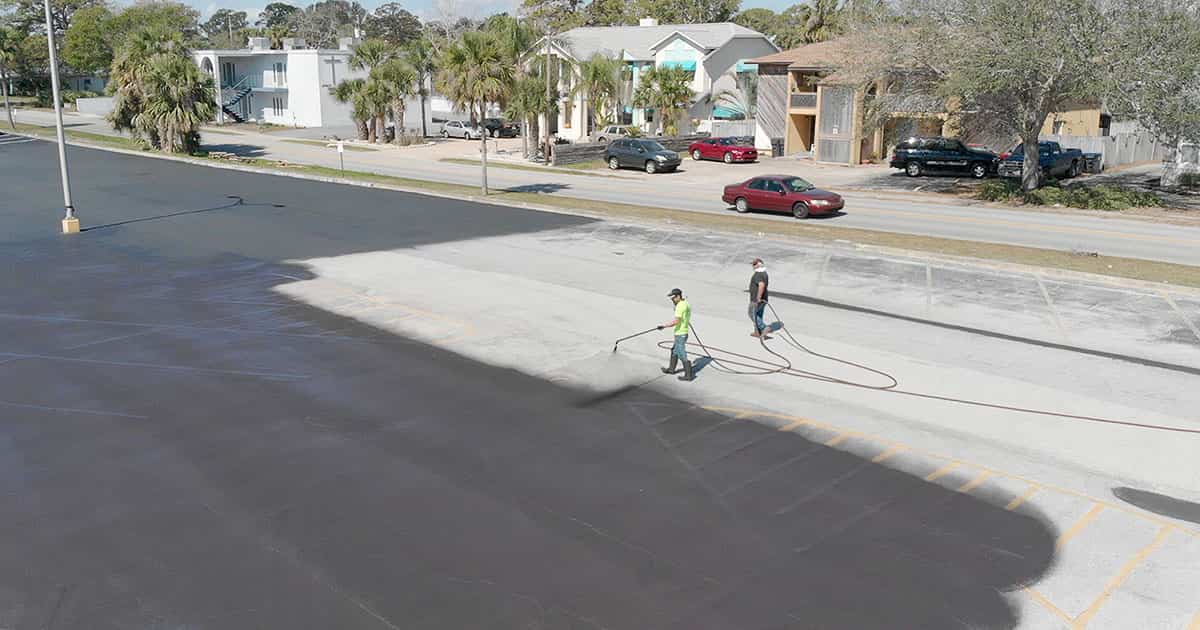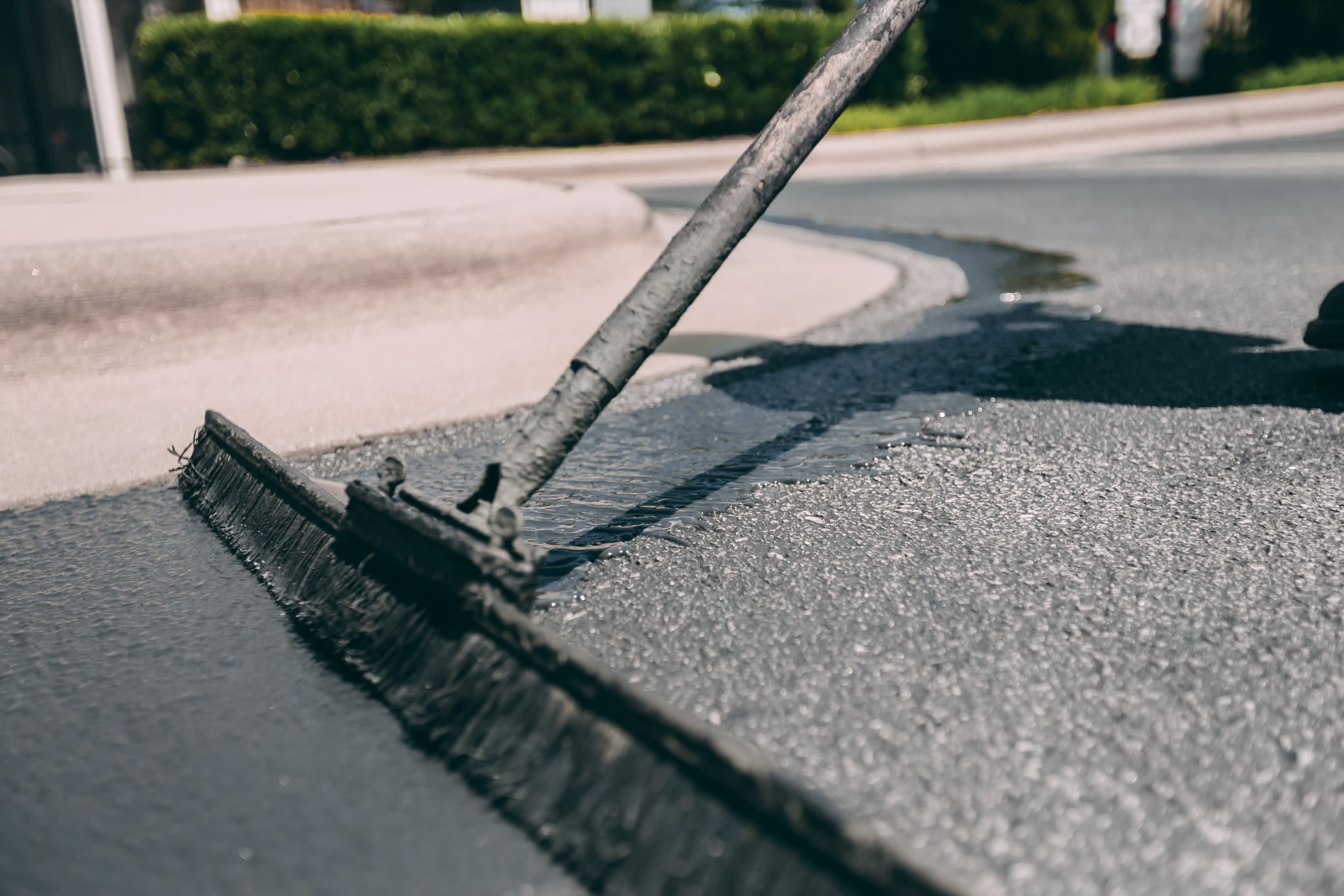Elevate Commercial Charm: Hot Mix Asphalt Sealing for Angled Parking Lots
Elevate Commercial Charm: Hot Mix Asphalt Sealing for Angled Parking Lots
Blog Article
Hot Mix Asphalt: A Sustainable Remedy for Pavement
Warm Mix Asphalt (HMA) has become a leading sustainable selection for sidewalk solutions, using a myriad of innovative innovations and environmental benefits. Its ability to lower and recycle materials power usage provides a compelling situation for its fostering in road construction projects. The lasting performance and sturdiness of HMA make it a preferred option for facilities development. As the demand for eco-friendly building practices expands, discovering the nuances of HMA's sustainability can provide useful understandings into the future of sidewalk remedies.
Ecological Benefits of Hot Mix Asphalt

Moreover, Hot Mix Asphalt helps to reduce urban heat island effects. Its dark color absorbs sunshine, lowering the amount of warmth showed back right into the environment contrasted to lighter-colored pavements. This can reduce ambient temperatures in urban areas, decreasing the need for a/c and inevitably minimizing power intake.
On top of that, Hot Mix Asphalt adds to boosted stormwater administration. Its permeable nature enables water to recharge and infiltrate the pavement groundwater products, lowering overflow and the threat of flooding. These environmental benefits make Warm Mix Asphalt a sustainable selection for leading highways and roadways.
Energy Efficiency in HMA Production
Is energy efficiency an essential factor in the production of Warm Mix Asphalt (HMA)? Definitely. Energy plays a significant role in the production of HMA, influencing both cost and ecological sustainability. One key aspect of energy performance in HMA manufacturing is using warm mix asphalt (WMA) modern technologies (angled parking). WMA allows for the blending and positioning of asphalt at reduced temperatures compared to standard warm mix asphalt, causing reduced energy intake throughout production. This procedure not only decreases fuel usage however also lowers greenhouse gas discharges, making it an extra eco pleasant choice.
Moreover, improvements in plant technologies have led to even more energy-efficient HMA manufacturing procedures. By enhancing energy use in HMA production, the industry can reduce its carbon impact while keeping top quality pavement products.
Recyclability of Warm Mix Asphalt
The recyclability of Hot Mix Asphalt (HMA) is a crucial facet of its sustainability and long-term ecological impact. HMA is one of one of the most recycled products in the United States, with over 100 you could try these out million bunches of redeemed asphalt pavement (RAP) being recycled every year in new pavement building and construction. Reusing HMA uses several environmental advantages, such as decreasing the need for virgin products, decreasing power consumption throughout manufacturing, and lowering the amount of waste sent to land fills.
The procedure of reusing HMA includes crushing the existing sidewalk, crushing it into smaller sized items, and blending it with brand-new accumulation and asphalt binder to create a recycled mix. Overall, the recyclability of HMA plays a significant role in promoting lasting practices within the sidewalk industry.

Long-Term Efficiency of HMA
Asphalt pavements show longevity and strength over a prolonged duration, mirroring the long-lasting efficiency of Hot Mix Asphalt (HMA) The longevity of HMA can be associated to its capacity to hold up against rush hour lots, severe climate condition, and the results of aging. Studies have revealed that properly designed and correctly created HMA pavements can last for twenty years or even more with regular maintenance. The secret to optimizing the lasting performance of HMA hinges on using top notch materials, complying with best practices in construction, and carrying out efficient upkeep helpful hints approaches. Appropriate drainage, regular examinations, and timely repairs are vital for preserving the structural stability of HMA pavements with time. Furthermore, innovations in HMA technology, such as making use of polymer-modified binders and warm mix asphalt, have actually additionally enhanced the longevity and long life of HMA sidewalks. By focusing on quality building and upkeep methods, HMA remains to confirm itself as a affordable and sustainable option for lasting pavement facilities.

HMA: Resilience and Sustainability
Demonstrating both toughness and sustainability, Warm Mix Asphalt (HMA) has actually become a foundation in the construction of resilient sidewalk infrastructures - regrading. HMA's resilience stems from its capacity to withstand heavy loads, harsh weather, and high traffic quantities, making it a trustworthy selection for roads, highways, and airport terminal paths. The make-up of HMA, which generally includes accumulations, binder, and filler, plays a critical role in enhancing its long life and resistance to wear and tear
Moreover, HMA's sustainability exists in its recyclability and energy-efficient production procedure. The capacity to reuse recovered asphalt sidewalk (RAP) in new HMA mixes decreases the need for virgin materials and reduces the ecological influence of sidewalk construction and maintenance. Additionally, the energy effectiveness of generating HMA hinges on its lower blending temperature levels compared to various other sidewalk materials, resulting in reduced power consumption and greenhouse gas exhausts.
Verdict
In final thought, warm mix asphalt (HMA) supplies a lasting option for sidewalk with its ecologically pleasant features. HMA's recyclability, power efficiency in production, and long-term sturdiness make it an environmentally friendly selection for road construction.
HMA is one of the most recycled materials in the United States, with over 100 million bunches of redeemed asphalt sidewalk (RAP) being reused each year in new sidewalk construction.The procedure of recycling HMA Homepage involves crushing the existing sidewalk, crushing it right into smaller items, and blending it with brand-new aggregate and asphalt binder to develop a recycled mix.Asphalt sidewalks show sturdiness and strength over an extensive duration, showing the long-lasting efficiency of Hot Mix Asphalt (HMA) Additionally, advancements in HMA modern technology, such as the usage of polymer-modified binders and cozy mix asphalt, have further boosted the toughness and longevity of HMA pavements. The capacity to recycle recovered asphalt sidewalk (RAP) in brand-new HMA mixtures decreases the demand for virgin materials and reduces the ecological effect of pavement building and maintenance.
Report this page